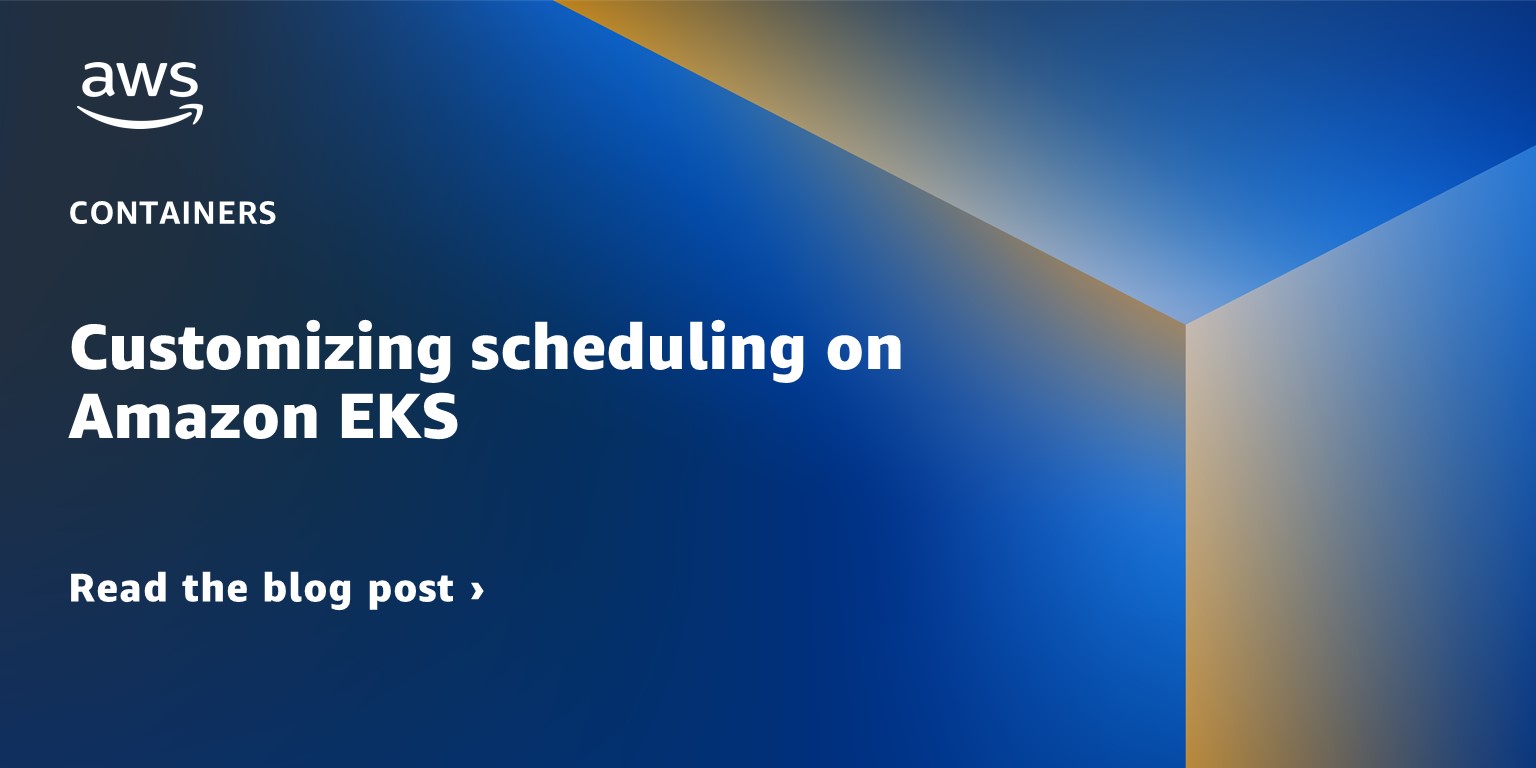Containers
Tag: EKS
Managing Kubernetes control plane events in Amazon EKS
Introduction Amazon Elastic Kubernetes Service (Amazon EKS) helps customers move their container-based workloads to the AWS Cloud. Amazon EKS manages the Kubernetes control plane so customers don’t need to worry about scaling and maintaining Kubernetes components, such as etcd and application programming interface (API) servers. As a declarative and reconciling system, Kubernetes publishes various events […]
Leverage AWS secrets stores from EKS Fargate with External Secrets Operator
Secrets management is a challenging but critical aspect of running secure and dynamic containerized applications at scale. To support this need to securely distribute secrets to running applications, Kubernetes provides native functionality to manage secrets in the form of Kubernetes Secrets. However, many customers choose to centralize the management of secrets outside of their Kubernetes […]
Amazon EKS and Spot Instances in action at Delivery Hero
This post was coauthored by Christos Skevis, Senior Engineering Manager, Delivery Hero; Giovanny Salazar, Senior Systems Engineer, Delivery Hero; Miguel Mingorance, Senior Systems Engineer at Delivery Hero at the time the blog post was written; Cristian Măgherușan-Stanciu, Senior Specialist Solutions Architect, Flexible Compute, AWS; and Sascha Möllering, Principal Specialist Solutions Architect, Containers, AWS. This post […]
Customizing scheduling on Amazon EKS
The interest in Kubernetes spiked in the fall of 2019, according to Google Trends. The US Department of Defense’s announcement that they had deployed Kubernetes on an F-16 could have attributed to the surge in interest. Today, Kubernetes is found in virtually every industry; from building Blockchain networks to 5G networks, customers use Kubernetes to […]
MYCOM OSI’s Amazon EKS adoption journey
This post was co-written by Dirk Michel, SVP SaaS and Digital Technology at MYCOM OSI, and Andreas Lindh, Specialist Solutions Architect, Containers at AWS. In this blog post, we will discuss how MYCOM OSI was able to lower costs and improve the flexibility of their Assurance Cloud Service (ACS) SaaS platform and bring-your-own-cloud (BYOC) option […]
How to route UDP traffic into Kubernetes
Since its release, Amazon Elastic Kubernetes Service (Amazon EKS) has been helping customers to run their applications reliably and at scale. UDP, or User Datagram Protocol, is a low-latency protocol that is ideal for workloads such as real-time streaming, online gaming, and IoT. The Network Load Balancer (NLB) is designed to handle tens of millions […]
Introducing Amazon CloudWatch Container Insights for Amazon EKS Fargate using AWS Distro for OpenTelemetry
Introduction Amazon CloudWatch Container Insights helps customers collect, aggregate, and summarize metrics and logs from containerized applications and microservices. Metrics data is collected as performance log events using the embedded metric format. These performance log events use a structured JSON schema that enables high-cardinality data to be ingested and stored at scale. From this data, […]
Continuous Delivery of Amazon EKS Clusters Using AWS CDK and CDK Pipelines
This blog is no longer up to date and we recommend reviewing the Amazon EKS Blueprints for CDK Pipeline SDK module which makes it easier to create infrastructure Continuous Delivery pipelines via AWS CodePipeline. Customers are looking for ways to automate the deployment of their Amazon EKS clusters across different versions, environments, accounts, and Regions. […]
Amazon EKS launches IPv6 support
The ongoing growth of the internet, particularly in the fields of mobile applications, IoT, and application modernization, has led to an industry-wide move to IPv6. With 128 bits of address space, IPv6 can provide 340 undecillion IP addresses, compared to 4.3 billion IPv4 addresses. Over the last several years, Amazon Web Services (AWS) has added […]
Deploying Containerized Application on AWS Outposts with Amazon EKS
AWS Outposts delivers AWS-designed infrastructure, services, APIs and tool to customer on-premises locations. Primary use-cases are applications that require low latency, local data processing or need to meet data residency requirements. Outpost connects back to a home Region the customer selects through a connection called the Service Link. It is operated, monitored, and managed by […]









